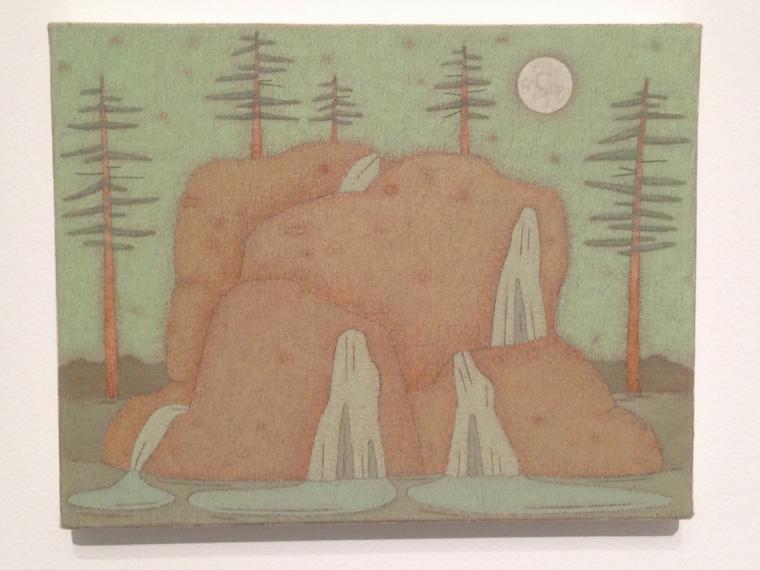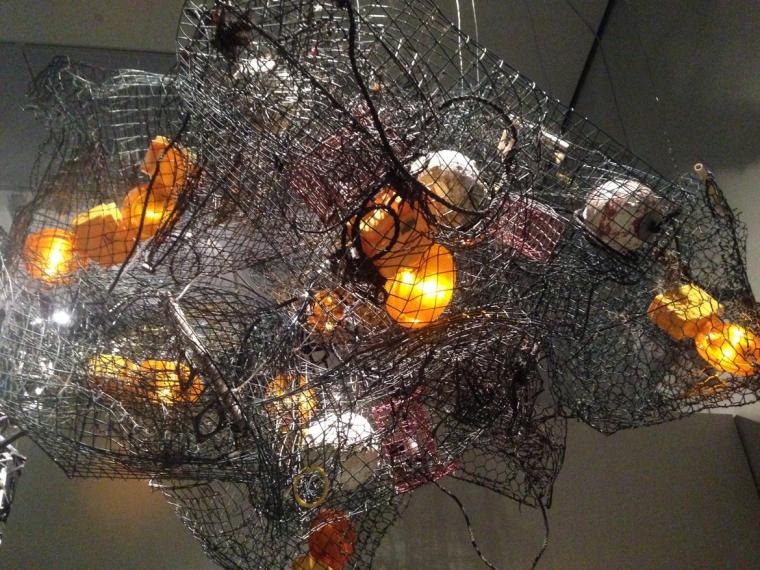
Each of the current visiting painting and sculpture exhibits at the Figge Art Museum is worth seeing on its own. Combined, the fare at the Figge is packed with visual value and should not be missed.
In the first-floor Gildehaus Gallery, 11 medium-size abstract, untitled works Steve Erickson completed over a year's period showcase the joy of painting for painting's sake. His meticulous paint applications evoke simultaneously microscopic amoeba imagery and Tolkien-inspired landscapes. The deftness with which he applies washes is a nod to his mentor John Dilg, whose 30 paintings make up his exhibit in the upstairs Katz Gallery titled Arterial Resources. Erickson studied under Dilg at the University of Iowa. Dilg's oil-on-canvas works are tight, nearly duo-tone landscape and animal paintings displaying a consistent and purposeful style that creep up to the edge of outsider, or naïve art. The collapsing perspectives and contending scale of subjects in Dilg's work, along with a childlike rendering of trees and waterfalls, are forsaken by his expert craftsmanship that makes his mountains glow. Dilg's and Erickson's works are on view through January 5.

Up on the third-floor gallery is the installation of Rose Frantzen's portrait and landscape painting extravaganza Portrait of Maquoketa and her partner Chuck Morris' suite of children's-book illustrations The Storytelling Tree. Frantzen's panels have been exhibited before at the Figge and the work was acquired into its permanent collection in 2015. Frantzen's alla prima painting style is superb and very accessible. Over two dozen vertical panels of differing heights house more than 50 portraits. Because viewers can walk amidst the panels, the result is a sculptural experience, too. When sitting in the sole chair in the room and facing the “back side” of the panels, a panoramic landscape depicting the Maquoketa hills and fields suddenly comes to life. The technical planning, setup, and execution required to achieve this awesome effect is even more apparent when one looks up to see the complex suspension apparatus that makes it possible. See page 29 for more about this exhibit that closes on February 2.
At the top fourth floor is Mia Feuer's mixed-media sculpture installation Totems of the Anthropocene. Anselm Kiefer's Germanic-gothic and Joseph Beuys' shamanistic influences are immediately apparent. The installations revolve around the artist's environmental, social, and political perspectives on petroleum's ubiquity in our lives. There are five specific installations and each has its own backstory. The artist's concerns for the impact of pollutants is balanced by her nod to the ancientness of the petroleum that is a critical physical ingredient of our modern lives. The centerpiece includes a synthetic skating rink in which visitors can don skates and take a whirl under a vortex of ravens and tree roots. This show ends on December 29.
For more on the Figge's exhibitions and programs, call (563)326-7804 or visit FiggeArtMuseum.org.











